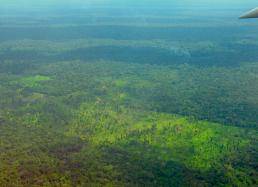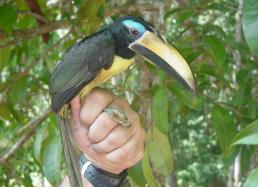How Evolution Impacts Conservation
Amazonia appears to be the "poster child" for environmental protection. Encompassing more than 2.5 million square miles (6.5 million square kilometers), it contains approximately 40% of the world’s remaining tropical rainforest and is one of the most species-rich habitats on Earth. Its diversity is also now known to be much older than previously thought, having evolved over millions of years.
But surprisingly, these attributes have actually lowered Amazonia's status on lists of global conservation priorities in recent years. Why? Until recently, conservation organizations have viewed this vast wilderness as a single, fairly stable ecosystem that has sheltered its ancient species well. On the surface, Amazonia seems capable of tolerating disturbance better than other smaller hotspots where new species are still emerging.
Amazonia's Evolutionary History
Science teaches us that plants and animals evolve as their environments change through time. Major ecological events—such as mountain building, volcanic activity, and climate change—can create isolated habitats where new species may emerge.
But since Amazonia's geography and climate have been comparatively stable for millions of years, the region has often been viewed as somewhat stagnant in evolutionary terms. Many of its species evolved long ago and are believed to be widely distributed across the entire region, where they are thought to have diversified little since. As a result, other smaller, biodiversity hotspots (such as islands and tropical mountains) that have experienced more recent, dramatic changes have overtaken top billing on conservation lists.
Technology's Impact
With the advent of DNA sequencing, satellite imaging, and other technologies, scientists have uncovered new information that challenges previous assumptions about Amazonia. Studies show that across the vast basin, even small events like a shifting river course can spur evolutionary changes by separating populations so that they are no longer interbreeding. Given time, these populations will evolve separately into different species.
This scenario appears to have played out repeatedly over the millennia. Recent discoveries not only reveal greater diversification of species than expected within the eight Areas of Endemism, but also include many new species restricted to micro-habitats carved out by the dynamic Amazonian river system. Clearly, evolutionary processes are still hard at work here, presenting a new picture for conservationists.



